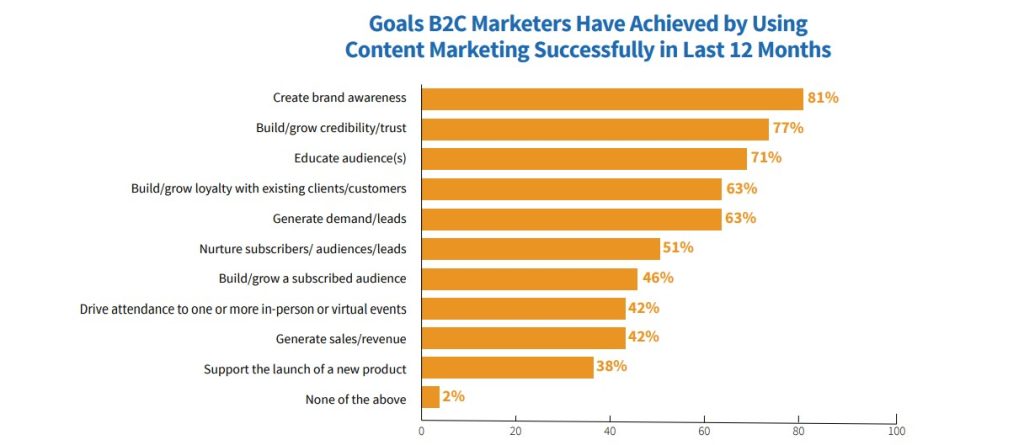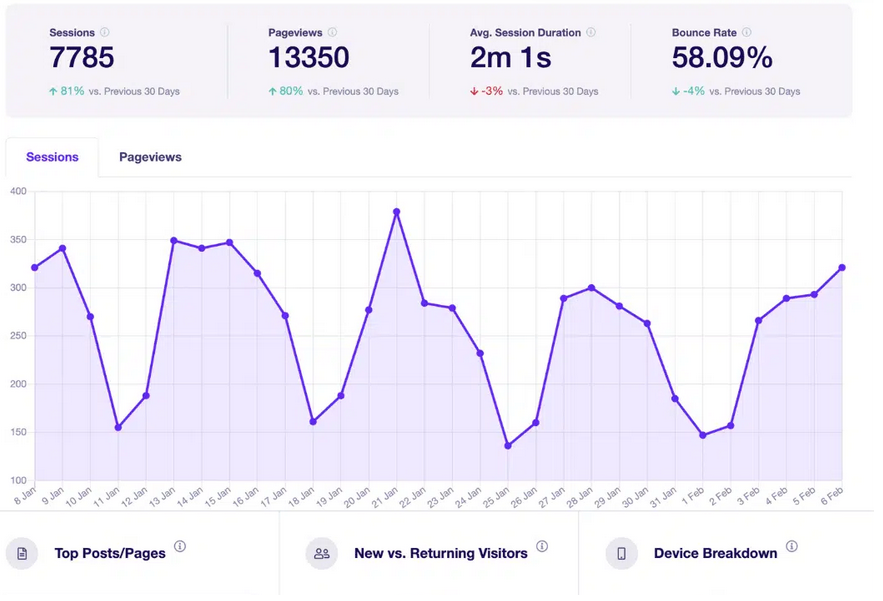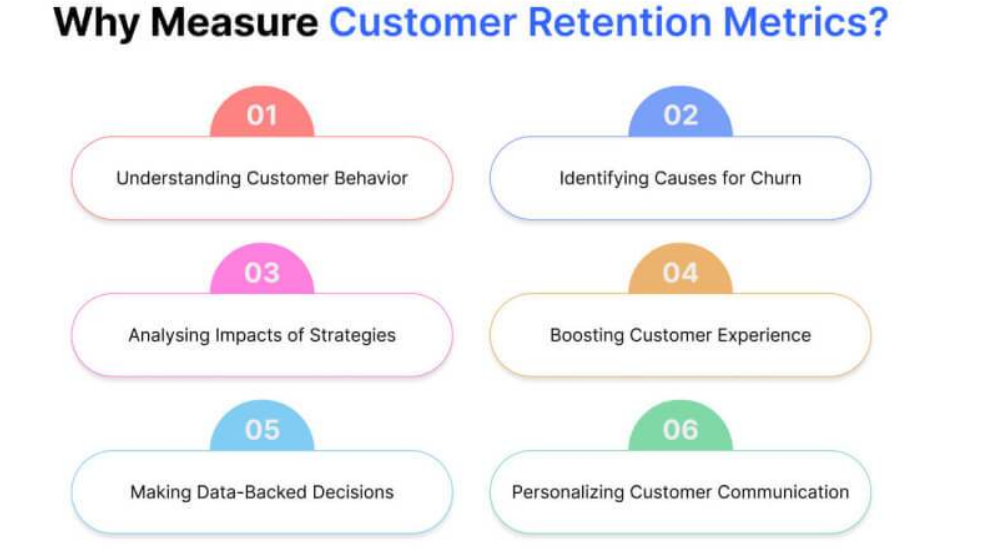Disclaimer:
While this post discusses key aspects of content marketing, please note that War Room does not offer content marketing services. However, we believe in a holistic digital approach, where various tactics like paid, social, SEO work together to complement your overall marketing strategy. Our focus is on programmatic advertising, using data-driven strategies to optimize paid media campaigns. If you’re looking to boost your ad performance, we’re here to help!
Content marketing is a crucial marketing strategy and remains one of the most efficient means to build brand trust and customer awareness.
According to Content Marketing Institute’s research, 81% of B2C marketers and 83% of B2B marketers have used content marketing. 77% of marketers use it to successfully build trust and credibility in their brand.
Here are some other goals that marketers have achieved using content marketing.
However, not all marketers are equally successful in their content marketing efforts. That’s where performance tracking and data-driven marketing can help you.
In this post, we’ll share a list of key metrics to measure content effectiveness. Use it to track your performance and optimize your strategy.
Here are the 7 metrics you can use to measure content effectiveness. These will help you make data-driven decisions and optimize your strategy.
Let’s get into it.
1. Website Traffic
We’ll put this first as it’s one of the most important metrics to measure content effectiveness. If your content isn’t driving people to your website, then your strategy is failing.
As you analyze content effectiveness, it’s important to consider how modern tools can enhance your strategy. For instance, data visualization with Power BI allows for a more comprehensive understanding of key performance metrics. This specialized toolset not only brings raw data to life but also assists in crafting impactful reporting—an aspect crucial for marketers looking to improve engagement and conversions.
You can read the Attrock expert guide to learn more about how to build a perfect content marketing strategy.
Tracking an increase or decrease in web traffic will show whether your content has reached and attracted your target audience. While there’s no rule as to how much traffic you should get, you should consider your content marketing goals to evaluate your performance.
Website traffic is highly important since it also shows how much your content interests your potential customers.
How can you track this?
You can easily track your traffic using tools like Google Analytics. You can also track average session duration, page views, number of sessions, and more.
Users refer to the number of unique visitors to your website.
This helps you track the number of new people you’ve been able to attract to your website with your content.
Sessions measure the frequency of visits to your website. This doesn’t have to be unique visits, however. You can also measure traffic under other categories on Google Analytics 4.
You can break down your traffic by location, type of device, time, and traffic source. These will help you further optimize your content marketing strategy.
2. Engagement
Alongside traffic, you should also measure how people interact with your content. You can track your engagement rate across various platforms.
Why is engagement important?
Because engagement influences brand trust, referrals, customer retention, and more.
For example, if you share your content across different social platforms, such as Facebook, Instagram, or TikTok, ensure you track your interactions.
When it comes to customer interaction with your content, companies that provide customer service solutions create content that answers customer questions. Creating articles, FAQs, knowledge bases and comparison-based content is a good content strategy.
For instance, Zendesk and Salesforce comparison posts attract relevant customers for these companies and also increase engagement with their content.
Engagement includes likes, shares, reposts, and views. On many social platforms, it has become very easy to view these metrics. X, for instance, displays the views, shares, and likes on each post.
A high number of shares, for instance, shows that many people find your content valuable, a sign that your content marketing strategy is working.
Apart from social platforms, you can also track the engagement rate on your website.
Here’s how.
Using tools like Google Analytics 4, you can view how long people spend on the site. This also includes the specific pages they visit the most.
A high number of pages per session and a long average session duration is a positive indicator. This shows visitors are interested in your content.
3. Conversions
The traffic and engagement metrics can easily get you excited. Honestly, it should. There’s more to check, however.
What about conversions?
It isn’t enough to measure traffic and engagements. What people do after interacting with your content also matters.
The end goal of content marketing isn’t just to offer relatable and relevant content, but to drive leads and conversions. One way to increase conversions is to feature or embed Google reviews on your website or landing page. This shows potential customers that other customers love and trust your brand, making purchase decisions easier for them.
Various things could count as a conversion, not just sales. A conversion is simply the required result you want to get from people interacting with your content.
It could be signing up for your newsletter, sharing your content, subscribing, making a sale, etc. If your conversion metric is restricted to brand awareness alone, then the number of shares and click-throughs are good metrics to use.
However, if your goal is to drive sales, then you can track how many sales you make through each content marketing channel. Google Analytics 4 allows you to track this under the behavior section of your content. Furthermore, you can utilize tools like BigQuery for data warehousing to better analyze your website audience insights!
A high conversion rate is crucial to brand growth, increased customers, and more profitability.
4. SEO Performance
High-quality, SEO-friendly content helps your blog posts and web pages rank for relevant search queries. This improves your website’s SEO performance.
That’s why you assess your SEO performance to measure content effectiveness.
A metric under this we’d recommend is the Search Engine Results Pages (SERP) rankings. This shows where your page ranks in the search results for specific keywords.
While these rankings can fluctuate frequently, they still give a good idea of how your content performs in search results.
A good SEO performance contributes to increased brand awareness, website traffic, and lead generation. You may use the help of an SEO agency to launch your SEO operations using their expertise successfully.
5. Retention
It’s important to check whether the interactions with your content and website are not just one-off.
Retention is key to the success of any marketing strategy. You want visitors to keep interacting with your content and existing customers to keep making purchases. This shows the importance of measuring retention.
So, when it comes to content marketing, it’s necessary to view your retention stats. You can check your customer return rate, for example.
Check the number of new visits compared to the number of return visits.
There should be a healthy balance between the two.
Also, don’t forget your bounce rate. The bounce rate refers to the number of visitors who leave after checking the first page. A low bounce rate means visitors stay longer on your website, a testament to a solid content marketing strategy.
For social channels, you can measure your follower count, likes, and shares over time. This will help you determine your content’s retention value on social media.
6. Cost
We also recommend reviewing how much your content marketing costs your business. It’s important not to get carried away with the different content strategies, which can be effective no doubt.
If you’re outsourcing content marketing, track the invoices and other expenses. Check how much content marketing costs you compared to other marketing strategies in your overall marketing mix.
Here’s why.
An effective content strategy shouldn’t put a strain on your budget. If it is, you can use the other metrics we’ve listed to identify less effective types of content and avoid wasting time and resources on those.
7. ROI
Lastly, one of the key metrics to measure content effectiveness is the ROI. How much did you spend on creating content across various channels?
How many conversions have you had as a result? Are you meeting your content marketing goals? Is contactless marketing working for your business?
These are important questions to ask. At the end of the day, the revenue you get from buyers who interact with your content also shows the effectiveness of your content.
Ready to Use These Metrics?
Content marketing is crucial to the success of your overall marketing strategy. It’s a way to build brand awareness, generate new leads, and increase engagement.
It’s important to measure your content effectiveness, however, to help you know what works and what doesn’t.
With the key metrics we’ve listed in this post, you can measure and optimize your content marketing efforts. Put them to use and watch the results over time. Best of luck!
About Guest Author
Reena is Director of Operations and Sales at Attrock, a result-driven digital marketing company. With 10+ years of sales and operations experience in the field of e-commerce and digital marketing, she is quite an industry expert. She is a people person and considers the human resources as the most valuable asset of a company. In her free time, you would find her spending quality time with her brilliant, almost teenage daughter and watching her grow in this digital, fast-paced era.









